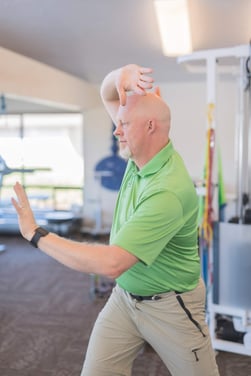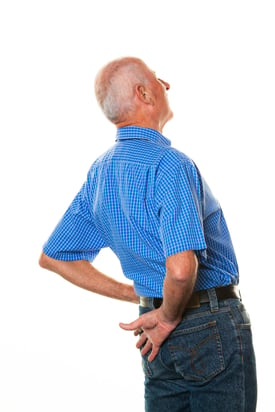 In the golden years of life, one's perspective becomes a cherished companion, guiding the way through memories and new experiences. The importance of perspective for senior citizens cannot be overstated. It can shape the quality of their lives, influence well-being, and contribute significantly to a fulfilling and joyous retirement. In this blog, we'll delve into the significance of perspective for seniors and explore how cultivating a positive outlook can enhance their overall happiness and life satisfaction.
In the golden years of life, one's perspective becomes a cherished companion, guiding the way through memories and new experiences. The importance of perspective for senior citizens cannot be overstated. It can shape the quality of their lives, influence well-being, and contribute significantly to a fulfilling and joyous retirement. In this blog, we'll delve into the significance of perspective for seniors and explore how cultivating a positive outlook can enhance their overall happiness and life satisfaction.
The Power of Perspective
As individuals age, they often encounter changes in health, lifestyle, and social dynamics. These shifts can be challenging, but the lens through which these changes are viewed can make all the difference. Rather than focusing solely on limitations, a positive perspective allows seniors to see opportunities for growth, adaptation, and continued engagement with life. This shift fosters resilience and a proactive approach to navigating the evolving landscape of aging.
Cultivating Gratitude
Gratitude has the transformative ability to elevate one’s perspective at any age. For seniors, reflecting on a lifetime of experiences and expressing appreciation for the lessons learned and relationships forged can bring profound fulfillment. Embracing gratitude allows seniors to recognize the richness of their journey, promoting a positive outlook that positively impacts mental and emotional well-being.
Tips for Practicing Gratitude:
- Keep a gratitude journal, noting daily positives.
- Share stories of meaningful moments with friends or family.
- Engage in community service, giving back can enhance feelings of gratitude.
Finding Purpose in Retirement
A positive perspective instills a sense of purpose, a vital element for seniors entering retirement. Whether through volunteer work, pursuing hobbies, or spending quality time with loved ones, maintaining a sense of purpose contributes to a meaningful life. By viewing retirement as an opportunity for new beginnings rather than an endpoint, seniors can embark on this chapter with enthusiasm and renewed passion.
Nurturing Social Connections
The importance of social connections for seniors cannot be emphasized enough. A positive perspective enhances the quality of these relationships, fostering community and mutual support. Engaging with friends, family, and the broader community provides opportunities for shared experiences, laughter, and emotional well-being. By valuing social connections and maintaining an open-minded perspective, seniors can combat feelings of isolation and cultivate a rich tapestry of relationships.
Embracing Change
Life is dynamic, and adapting to change is a constant reality. Seniors who approach change with a positive perspective are better equipped to navigate challenges, whether it’s adjusting to a new living arrangement, embracing technology, or adapting to changing health conditions. A flexible and optimistic mindset allows seniors to face transitions with resilience and grace.
The Power of Mindfulness
In the later years of life, mindfulness becomes a powerful tool for staying present and savoring the richness of each moment. By cultivating awareness and living in the present, seniors can appreciate the beauty in small, everyday experiences. This mindful perspective fosters gratitude for the simple joys that make life meaningful.
A New Dawn of Possibilities
As the sun sets on one chapter of life, a new dawn emerges, filled with possibilities. The importance of perspective for seniors lies in its power to shape their narratives. A positive outlook not only enhances emotional well-being but also opens doors to a life filled with purpose, gratitude, and meaningful connections.
Embrace your golden perspective! Reflect on your journey, share your stories, and engage with your community. Remember, it’s never too late to shift your outlook and discover the beauty of this stage of life.
By navigating the complexities of aging with resilience, grace, and an enduring zest for life, seniors can truly thrive.


 It’s not uncommon for people to describe uncomfortable physical sensations; musculoskeletal discomfort has become increasingly common. If you think about the average office worker, they will likely talk about pain in the neck, upper traps, and shoulders. Why these specific areas? When people are stressed, they have a tendency to hunch over and round the upper back. This tightens the aforementioned muscles, causing irritation. Trauma and chronic stress can have a lingering impact on our bodies; the body can unconsciously tense up, causing chronic pain.
It’s not uncommon for people to describe uncomfortable physical sensations; musculoskeletal discomfort has become increasingly common. If you think about the average office worker, they will likely talk about pain in the neck, upper traps, and shoulders. Why these specific areas? When people are stressed, they have a tendency to hunch over and round the upper back. This tightens the aforementioned muscles, causing irritation. Trauma and chronic stress can have a lingering impact on our bodies; the body can unconsciously tense up, causing chronic pain. 
.jpg?width=394&name=GettyImages-962782170%20(1).jpg) I keep finding more and more news stories, magazine articles, social media ads, and even store displays that contain the words “Gut Health.” 10 years or more ago, you never heard that phrase anywhere, but now it’s all the rage. So, why all the buzz? Well, it turns out that research has linked gut health to a variety of functions in your body.
I keep finding more and more news stories, magazine articles, social media ads, and even store displays that contain the words “Gut Health.” 10 years or more ago, you never heard that phrase anywhere, but now it’s all the rage. So, why all the buzz? Well, it turns out that research has linked gut health to a variety of functions in your body.


 I am a firm believer in massage therapy because a little over a year ago, I woke up in agonizing lower-back pain that did not allow me to move. My first thought was maybe I should go see a chiropractor. I had been to one before, but was not the biggest fan because they cracked my back and sent me on my way after charging $65.
I am a firm believer in massage therapy because a little over a year ago, I woke up in agonizing lower-back pain that did not allow me to move. My first thought was maybe I should go see a chiropractor. I had been to one before, but was not the biggest fan because they cracked my back and sent me on my way after charging $65. 
 “Meditation is the ultimate mobile device; you can use it anywhere, anytime, unobtrusively.” ― Sharon Salzberg
“Meditation is the ultimate mobile device; you can use it anywhere, anytime, unobtrusively.” ― Sharon Salzberg Twenty years ago, would you have ever thought you would be checking out the break-room bulletin board and coming across a yoga class being offered in the office or onsite gym? Chances are it would have been highly unlikely, not to mention overlooked because it did not have the buzz or trendy reputation it does now.
Twenty years ago, would you have ever thought you would be checking out the break-room bulletin board and coming across a yoga class being offered in the office or onsite gym? Chances are it would have been highly unlikely, not to mention overlooked because it did not have the buzz or trendy reputation it does now.